


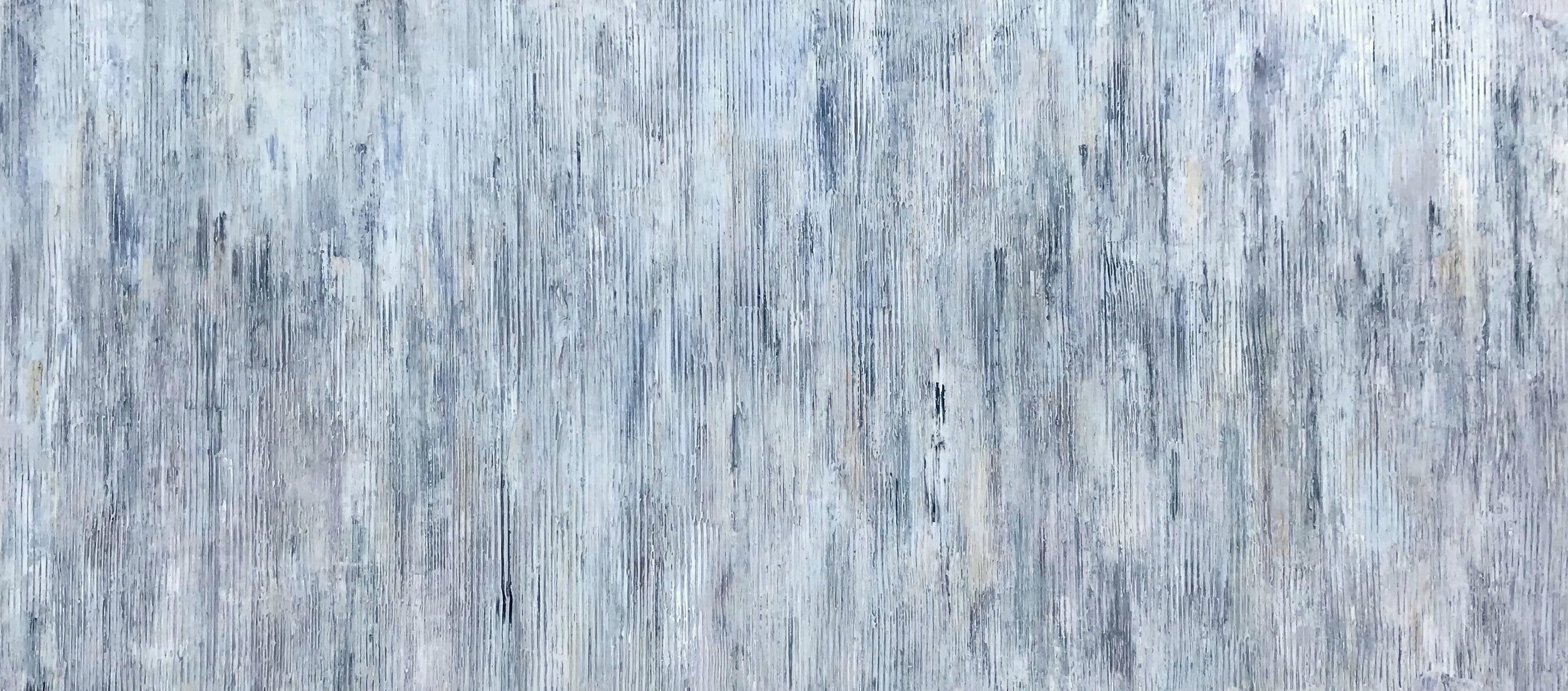
SOLD • Similar painting available as a commission
This work is part of a larger series of paintings based on sound waves of voicemail messages I have saved since returning to America. The title refers to the language used - the core meaning of the message.

AVAILABLE



SOLD • Similar painting available as commission

SOLD • Similar work available as commission

SOLD • Similar work available as commission


This work is part of a larger series of paintings based on sound waves of voicemail messages I have saved since returning to America. Each painting is a visual representation of language used in the message: the abstracted imagery and lines correspond to a sound wave of this spoken audio. The title references this text - the core meaning of the message - and the number corresponds to the order received.
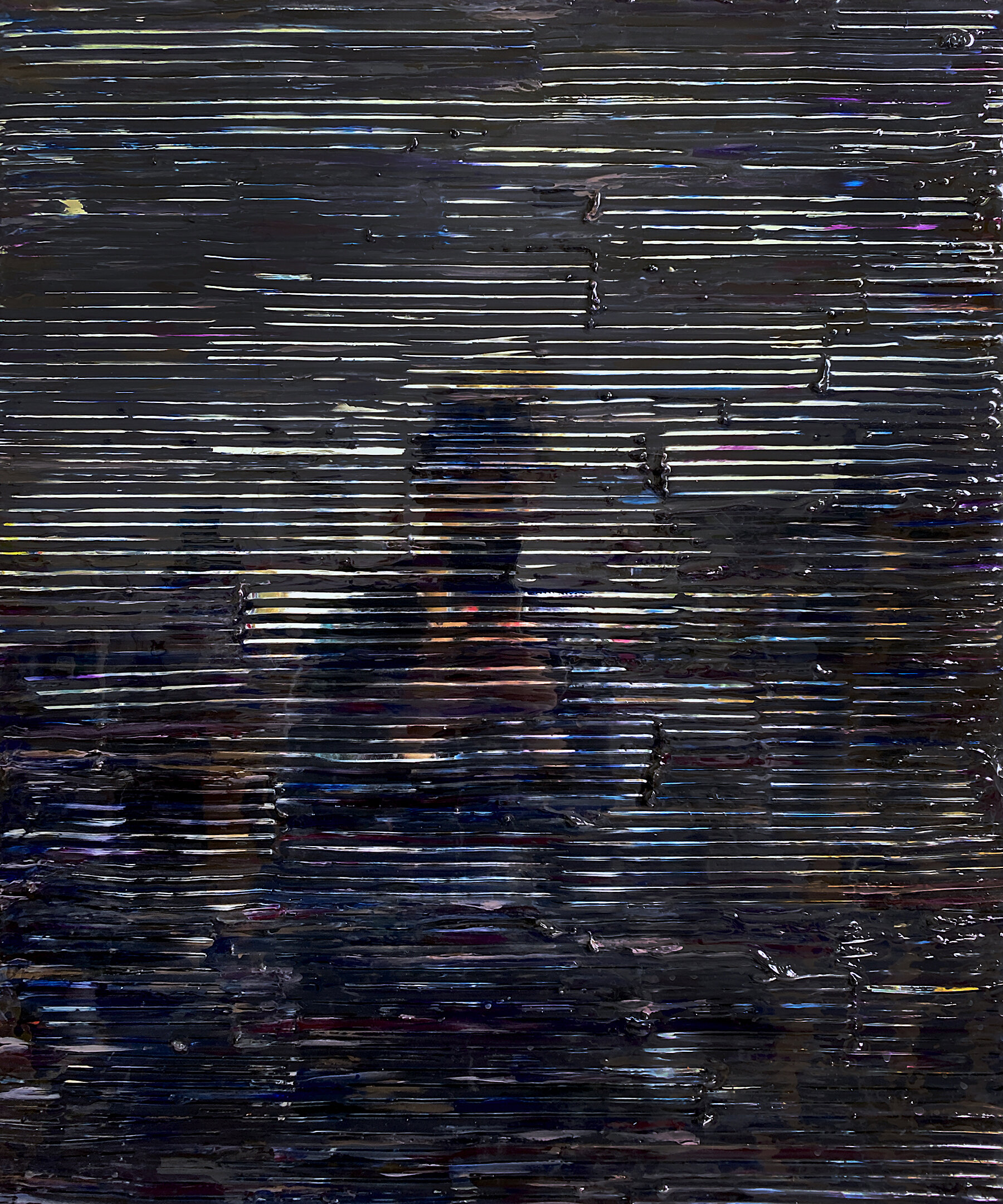
Acrylic, mirror, and resin on panel • AVAILABLE • $1600



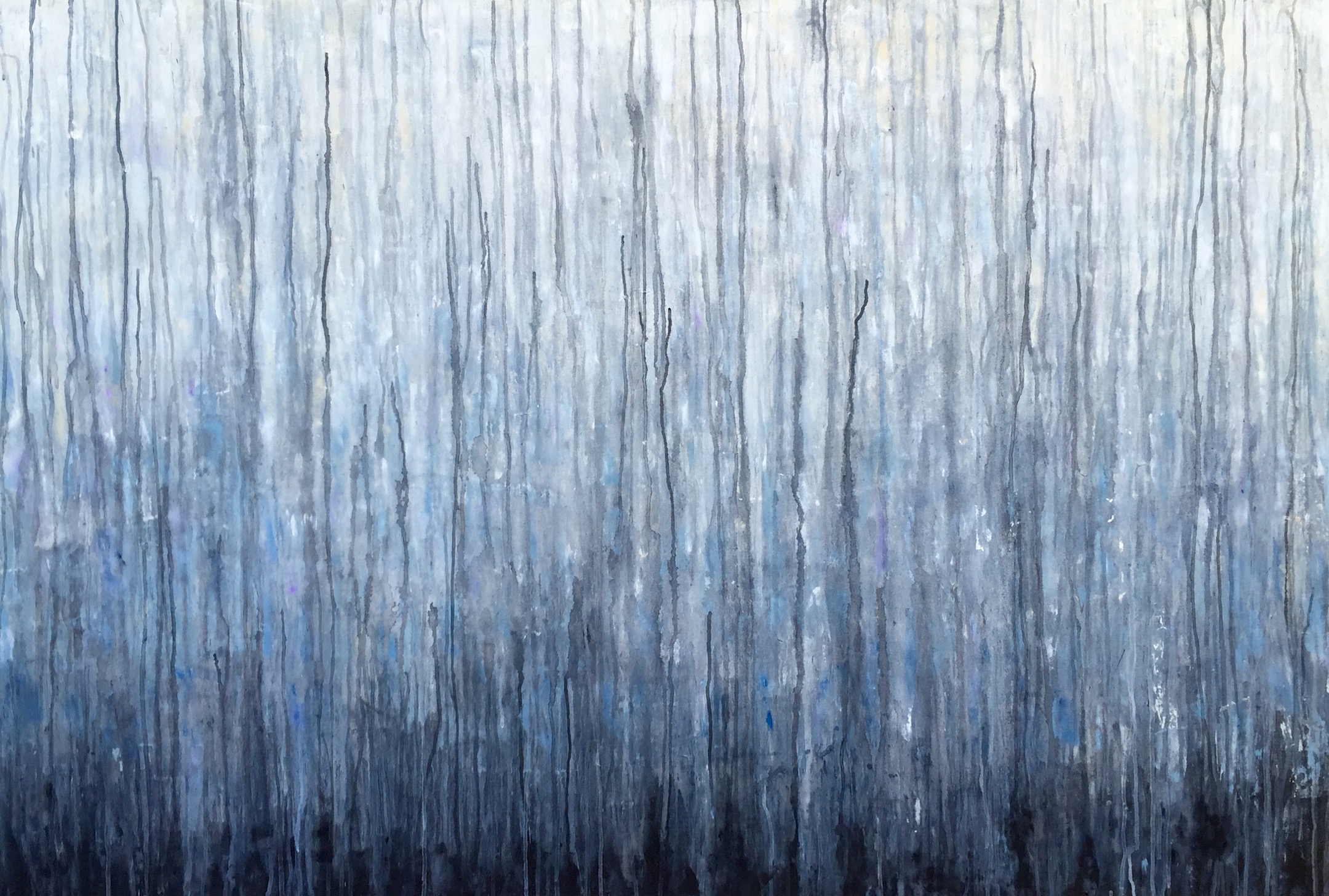
The title refers to the idiom "Out of the frying pan and into the fire" or to go from a bad situation to one that is much worse.



“There is a very nice idea from the Gutai group, a Japanese group of artists, where they said 'When this chair degrades, it's actually the chair's revenge for being taken out of its natural state.' All of these materials, including us, are constantly in a state of either growth or degradation.” – Artist Sarah Sze
In 2016 the Bay Area experienced an extended period of intense rain after a prolonged drought. I thought about the transformation and breakdown of materials, specifically concrete, while driving to my studio. It starts as a powder, becomes nearly indestructible when dry, but inevitably cracks over time. This deterioration occurs quickly with water and fluctuating temperatures. Holes in roads are caused when water seeps into the pavement, freezes, and expands. Something as soft and delicate and fragile as water has the power to break the unbreakable.
This painting references disintegration. It is part of a larger series of work that explores the concept of light and dark coexisting, both literally and metaphorically. These paintings are an emotional representation of paradoxes; I use light to cover the darkness: white to cover the black. My intention is to not use white as a color, but rather as a tool to illustrate exquisitely subtle nuances.




SOLD • Similar work available as commission

The title of this painting is intentionally uncapitalized as the phrase is taken from an e.e. cummings poem about love during wartime.
Click here to read the poem we love each other very dearly / ,more

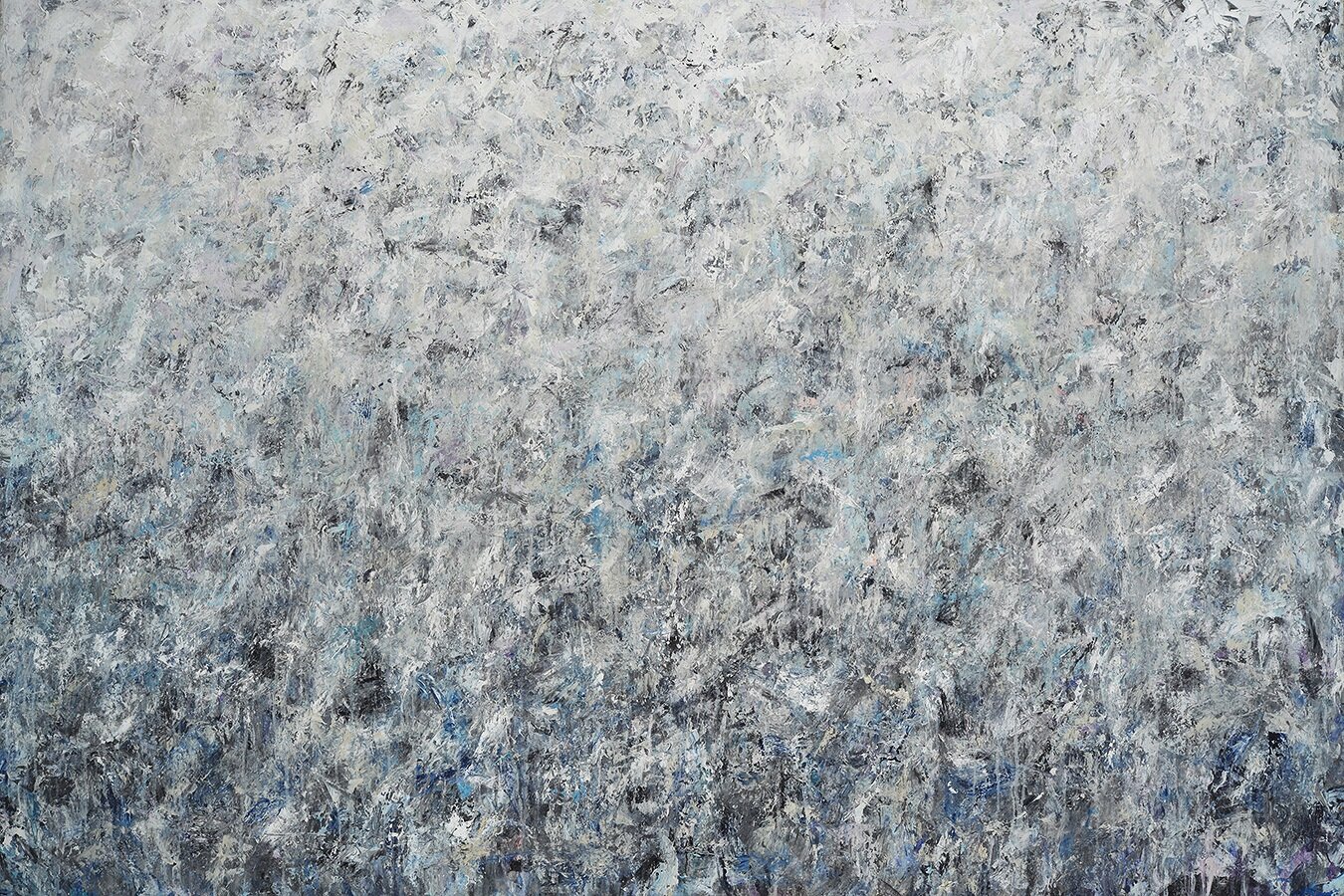
The title for this painting refers to the Portuguese word for a "deep emotional state of nostalgic or profound melancholic longing for an absent something or someone that one loves. It is an emotional state that can evoke happiness, excitement, and pleasure for something that has happened while simultaneously cause sadness and suffering knowing it will never happen again."
Happiness and sadness at the same time.


The title is taken from Iago's last lines is Shakespeare's Othello. At the end of the play, chaos ensues yet there are no logical explanations for Iago’s behavior. The painting is a meditative reflection on powerlessness and how when faced with the inexplicable, we must search within ourselves for the answers.
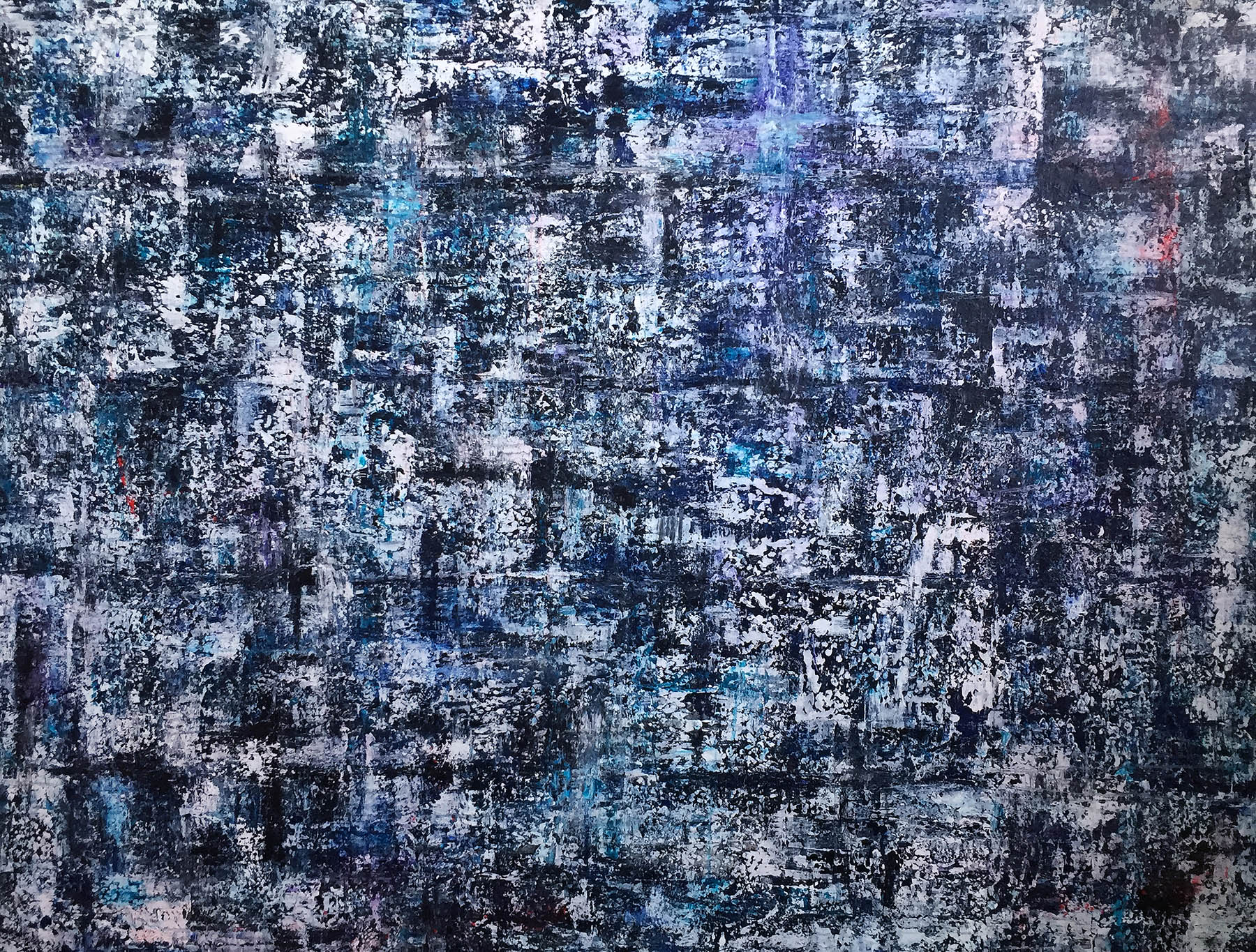
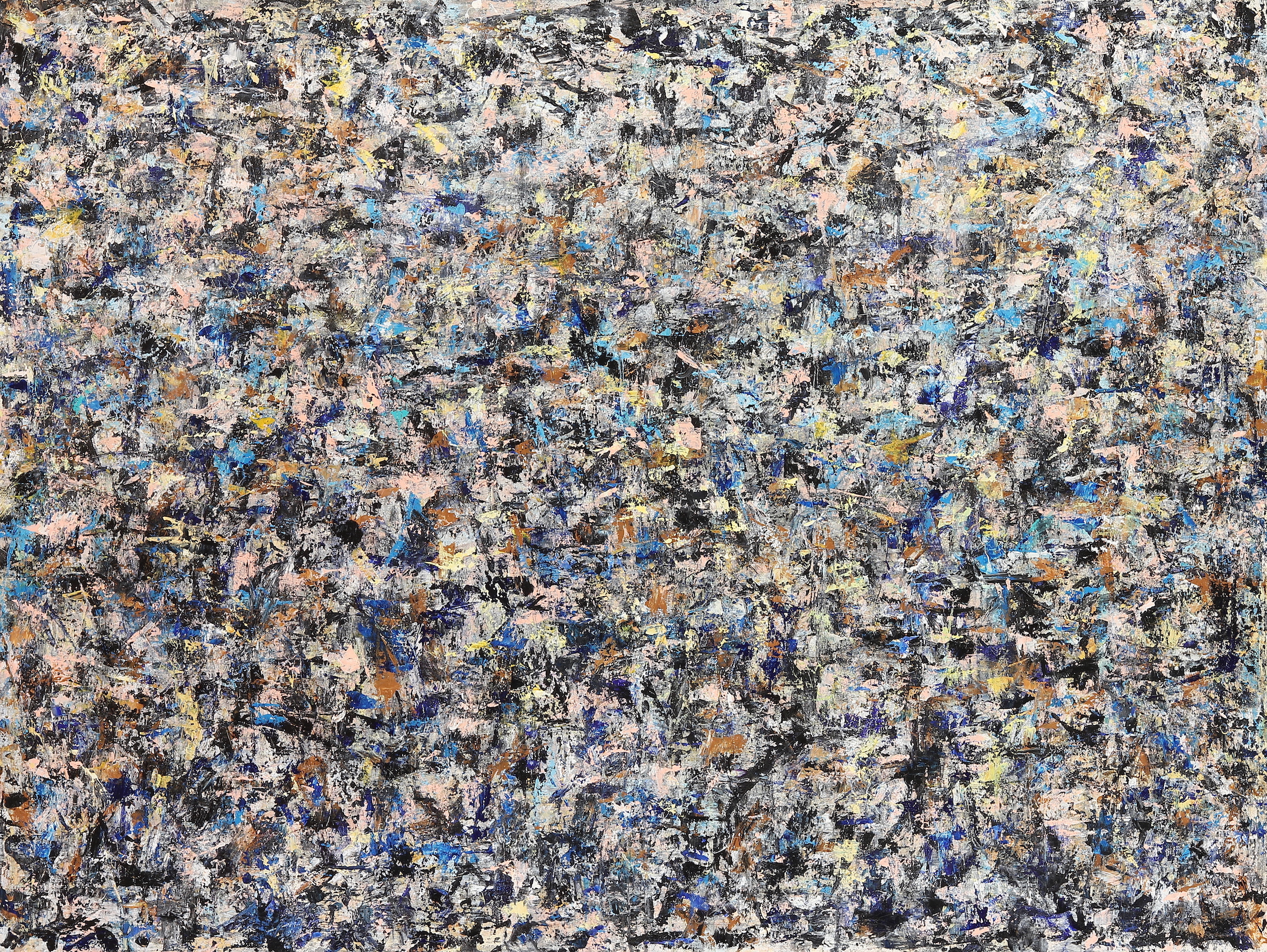

In the Impermanence series, the word “me” is repeated throughout the painting. When written in cursive and without spaces, the word “me” loses its significance. It is simply another aesthetic element and another layer.
I incorporated text into my paintings as a way to bridge the gap between painting and writing. People tell me they cannot draw. Yet in my mind, drawing, painting, and writing all require practice, not creativity. I see drawing and painting as an extension of handwriting. Each individual’s handwriting is highly unique.
The “me” in the paintings is not obvious at first. Although the repetition of the word “me” could be interpreted as narcissistic, my intention is to reflect upon the woman’s role as caretaker and putting others first. It is also indicative of the anxiety women have when speaking their mind for fear of disappointing someone or being viewed negatively. The choice of “Impermanence” for this series is therefore intended to highlight the concept that this self-sacrificing behavior of women can be changed.

In the Impermanence series, the word “me” is repeated throughout the painting. When written in cursive and without spaces, the word “me” loses its significance. It is simply another aesthetic element and another layer.
I incorporated text into my paintings as a way to bridge the gap between painting and writing. People tell me they cannot draw. Yet in my mind, drawing, painting, and writing all require practice, not creativity. I see drawing and painting as an extension of handwriting. Each individual’s handwriting is highly unique.
The “me” in the paintings is not obvious at first. Although the repetition of the word “me” could be interpreted as narcissistic, my intention is to reflect upon the woman’s role as caretaker and putting others first. It is also indicative of the anxiety women have when speaking their mind for fear of disappointing someone or being viewed negatively. The choice of “Impermanence” for this series is therefore intended to highlight the concept that this self-sacrificing behavior of women can be changed.

Similar work available as commission
In the Impermanence series, the word “me” is repeated throughout the painting. When written in cursive and without spaces, the word “me” loses its significance. It is simply another aesthetic element and another layer.
I incorporated text into my paintings as a way to bridge the gap between painting and writing. People tell me they cannot draw. Yet in my mind, drawing, painting, and writing all require practice, not creativity. I see drawing and painting as an extension of handwriting. Each individual’s handwriting is highly unique.
The “me” in the paintings is not obvious at first. Although the repetition of the word “me” could be interpreted as narcissistic, my intention is to reflect upon the woman’s role as caretaker and putting others first. It is also indicative of the anxiety women have when speaking their mind for fear of disappointing someone or being viewed negatively. The choice of “Impermanence” for this series is therefore intended to highlight the concept that this self-sacrificing behavior of women can be changed.

In the Impermanence series, the word “me” is repeated throughout the painting. When written in cursive and without spaces, the word “me” loses its significance. It is simply another aesthetic element and another layer.
I incorporated text into my paintings as a way to bridge the gap between painting and writing. People tell me they cannot draw. Yet in my mind, drawing, painting, and writing all require practice, not creativity. I see drawing and painting as an extension of handwriting. Each individual’s handwriting is highly unique.
The “me” in the paintings is not obvious at first. Although the repetition of the word “me” could be interpreted as narcissistic, my intention is to reflect upon the woman’s role as caretaker and putting others first. It is also indicative of the anxiety women have when speaking their mind for fear of disappointing someone or being viewed negatively. The choice of “Impermanence” for this series is therefore intended to highlight the concept that this self-sacrificing behavior of women can be changed.